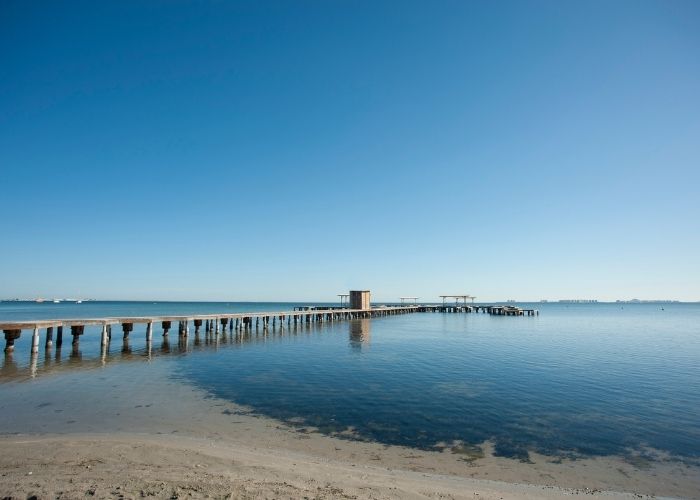SAN JAVIER – Partly due to weather conditions, Mar Menor, Spain’s largest inland sea, is not in good shape. A process of eutrophication is underway as a result of decades of supply of nutrients via the intensive agriculture in the area and other human activities, such as mass tourism.
At the moment the risk of an episode of oxygen deprivation (anoxia) and massive death of fish and shellfish is very high in the Mar Menor. As such is the conclusion of the Spanish Institute of Oceanography (IEO, CSIC), which falls under the Ministry of Science and Innovation. The report was prepared at the request of the Ministry for the Ecological Transition and Demographic Challenge (Miteco) following the torrential rain episode last March.
Eutrophication
The report, sources at Miteco said in a statement, focuses on the defining role of the contribution of nutrients and organic matter as a driver of eutrophication in the lagoon. These flow-through drainages and surface runoff, through groundwater, after heavy rain such as that of the past baskets, into the inland sea in extra large quantities as a result of intensive agriculture in the area.
Also read: Polluted Mar Menor deters tourists and affects prices
Last March was the wettest in the Murcia region in 62 years. Moreover, that wet period also coincided with two particularly heavy episodes of Calima (mud rain with desert sand).
‘Perfect storm’ for fast algae growth
These climatic anomalies, together with the high concentration of nutrients already existing in the saline lagoon, are a perfect cocktail for the rapid growth of macroalgae and other species. This is the clearest evidence of the eutrophication process that the area has been going through for decades.
Decrease in salinity because of rainfall
On the other hand, the report warns that the heavy rainfall has also caused a sharp drop in salinity. And salinity is a variable of great importance to the health of the Mar Menor.
The rainfall causes a rise in the groundwater level, which further increases the contribution of freshwater with high nutrient content. This, together with the seasonal dynamics, results in a serious disturbance of the salinity in the lagoon system.
A notable increase in water turbidity
Also, from February 2022, experts have noted a notable increase in water turbidity. This new episode plays a fundamental role in the increased contribution of materials to the water during rainy periods. Furthermore, due to the development of phytoplankton communities in the water, this effect could continue for weeks or even months.
Strong increase in chlorophyll
The most recent data available shows a strong increase in chlorophyll. This is likely to continue to grow due to the rise in temperatures and the number of hours of sunshine typical of spring.
Also read:
Mar Menor suffers biggest crisis with five tons of dead fish on the beaches


